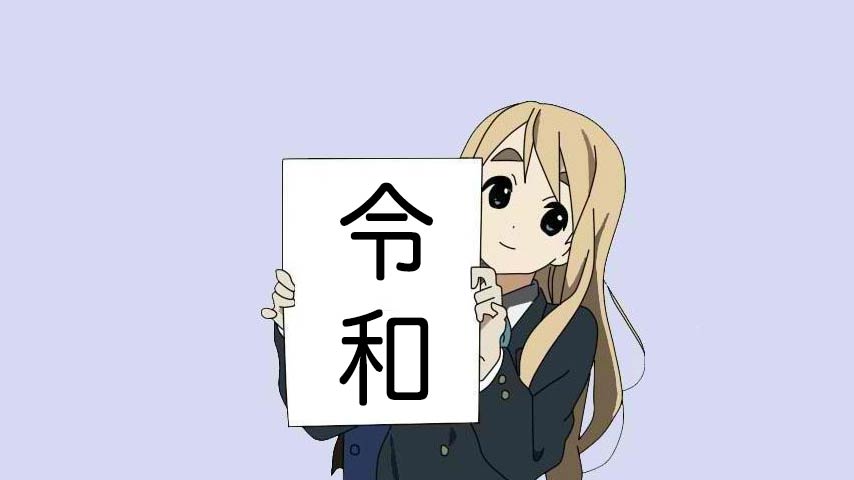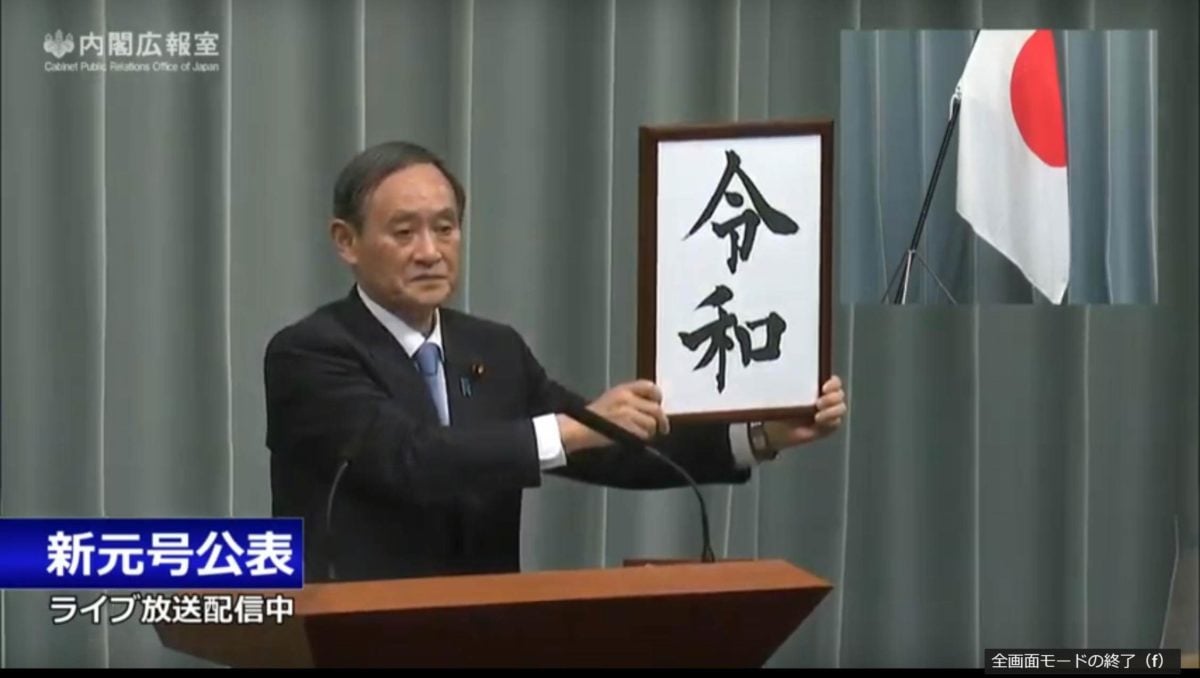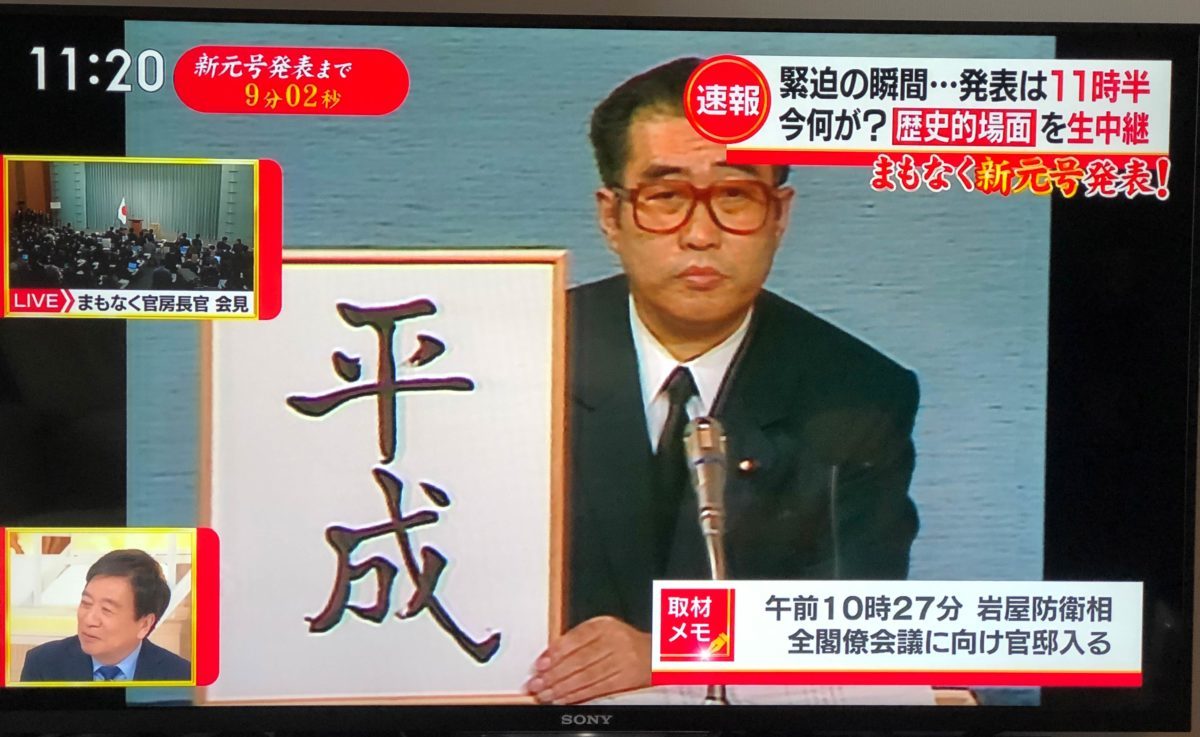As we’ve been covering for a few months, the current Japanese Emperor Akihito, age 85, is slated to abdicate his throne to his son Naruhito this coming April 30. This will bring the Heisei Period to an end and officially begin the next Imperial era. And now the new Imperial era name has been announced: it’s 令和 reiwa, which is a phrase that comes from a 1200-year-old collection of poetry called the Man’yōshū.
All of Japan has been jumping with excitement as the announcement of the new Imperial era name’s announcement has approached, as they debate online about what the best names could be. In the run-up to the announcement, all major TV channels are covering the event non-stop. The moment the Heisei era’s name was announced back in 1989 became a huge event, with the image of Keizo Obuchi, the goofy-looking Cabinet Secretary, burned into postwar Japanese history.
Japan organizes its historical calendar according to eras that mark the reign of each Emperor, and students of history can focus on each era to see what forces affected the country at the time. The four recent Imperial eras have been Meiji 明治 Meiji (“Enlightened Rule,” 1868-1912), when Japan began to emulate the West for the first time; 大正 Taisho (“Great Righteousness,” 1912-1926), during which a huge earthquake killed 140,000 in Tokyo; the long 昭和 Showa (“Brilliant Harmony,” 1926-1989), a time of war, recovery and eventually, toilets that wash your butt for you; and 平成 Heisei (“Having Attained Peace and Maturity”), which saw Tamagotchi digital pets, Sailor Moon and the rise of the Internet. Japan has been preparing for the end of the Heisei era since last year, getting its house in order and taking out the trash.
And now we finally know the name of the new Imperial era name. I wonder what exciting things we’ll all encounter together in this coming era of Japanese history? I hope it’s a peaceful time for Japan and the rest of the world!

















